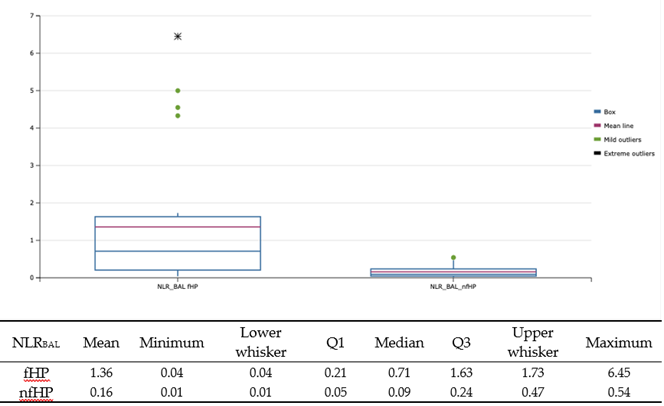Abstract
Introduction
The neutrophil to lymphocyte ratio (NLR) in peripheral blood was extensively studied for many chronic diseases, but there are few studies about the NLR significance in hypersensitivity pneumonitis (HP) and even fewer of the NLR in broncho-alveolar lavage (NLRBAL).
Methods
BAL samples from 54 consecutive patients diagnosed with HP were retrospectively analysed in this study and clustered into 30 fibrotic HP (fHP) and 24 non fibrotic HP (nfHP).
Results
The nfHP were mainly acute forms, whereas the fHP were predominantly chronic. Gender distribution and smoking habits were similar. The fHP patients were older (p= 0.001) and had longer onset of symptoms (p=0.004).
There was no difference in the distribution of high NLR values in the two groups (c2= 0.29, p=0.58), but NLRBAL was significantly higher in fHP (p=0.0006). The NLRBAL correlation to the fibrotic status was statistically significant (Rho=0.58, p=0.0001). Even more, a higher NLRBAL at diagnosis anticipated a lower lung function of retrictive pattern at 3 months after the diagnosis.
Conclusion
The relative increase of neutrophils cells in BAL, with a lower contribution of the lymphocyte population to the total cell count, as expressed by the NLRBAL should be considered a marker of fibrosis in HP. The utility of NLRBAL to assess the prognostic and in the antifibrotic response should be further investigated.